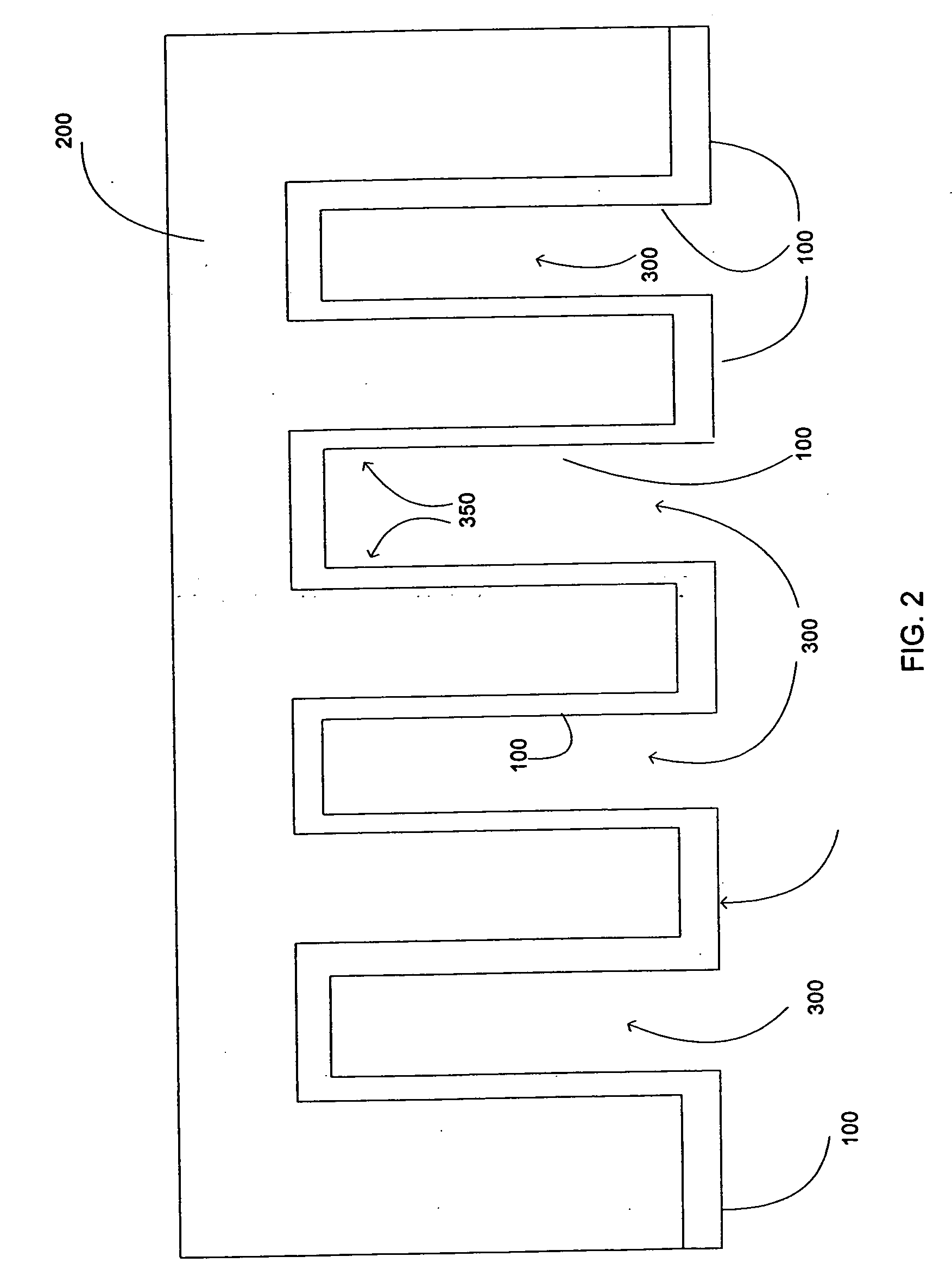Isotropic glass-like conformal coatings and methods for applying same to non-planar substrate surfaces at microscopic levels
a conformal coating and isotropic glass technology, applied in the direction of ion implantation coating, coating, layered products, etc., can solve the problems of poor uniformity of coatings, hampered conventional coating techniques, and lack of minimum acceptable coating characteristics
- Summary
- Abstract
- Description
- Claims
- Application Information
AI Technical Summary
Benefits of technology
Problems solved by technology
Method used
Image
Examples
example
[0045] As shown in FIG. 2, a conformal ion-plated silicon dioxide coating 100 having a physical thickness of 450 nm was uniformly deposited at room temperature upon a structured transparent borosilicate glass substrate 200. The thickness of the glass substrate 200 was about 2 mm, and the glass substrate was structured to include a plurality of microscopic non-planar areas 300. The length, width and depth of each non-planar area / surface 300 measured about 50 microns.
[0046] As evaluated by scanning electron microscopy, the resultant glass-like silicon dioxide coating was thoroughly conformal, with uniform coverage even in the sharp interior corners 350 of each non-planar area / surface 300. Moreover, the physical structure of the resulting silicon dioxide coating 100 was amorphous and fully densified, and mimicked the optical, physical and chemical characteristics of pure bulk quartz.
[0047] The ion plating deposition conditions for application of such a silicon dioxide coating 100 may...
PUM
| Property | Measurement | Unit |
|---|---|---|
| thicknesses | aaaaa | aaaaa |
| thicknesses | aaaaa | aaaaa |
| angle | aaaaa | aaaaa |
Abstract
Description
Claims
Application Information
 Login to View More
Login to View More - R&D
- Intellectual Property
- Life Sciences
- Materials
- Tech Scout
- Unparalleled Data Quality
- Higher Quality Content
- 60% Fewer Hallucinations
Browse by: Latest US Patents, China's latest patents, Technical Efficacy Thesaurus, Application Domain, Technology Topic, Popular Technical Reports.
© 2025 PatSnap. All rights reserved.Legal|Privacy policy|Modern Slavery Act Transparency Statement|Sitemap|About US| Contact US: help@patsnap.com



